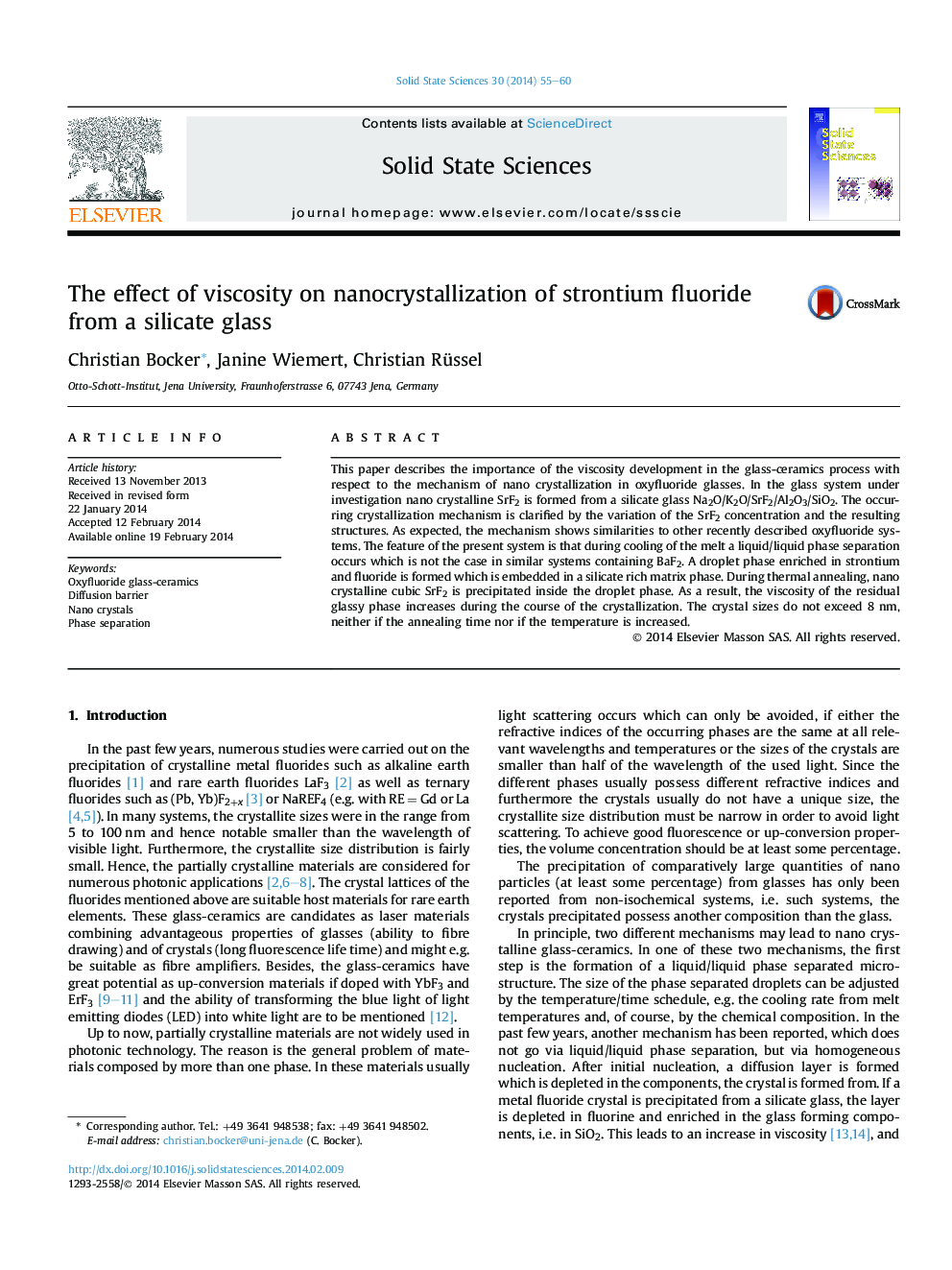| Article ID | Journal | Published Year | Pages | File Type |
|---|---|---|---|---|
| 1504452 | Solid State Sciences | 2014 | 6 Pages |
•Viscosity development in the glass-ceramics process during nano crystallization.•During cooling of the melt a liquid/liquid phase separation occurs.•Nano crystalline cubic SrF2 is precipitated inside the droplet phase.•The viscosity of the residual glassy phase increases during nanocrystallization.•The mechanism shows expected similarities to other oxyfluoride systems.
This paper describes the importance of the viscosity development in the glass-ceramics process with respect to the mechanism of nano crystallization in oxyfluoride glasses. In the glass system under investigation nano crystalline SrF2 is formed from a silicate glass Na2O/K2O/SrF2/Al2O3/SiO2. The occurring crystallization mechanism is clarified by the variation of the SrF2 concentration and the resulting structures. As expected, the mechanism shows similarities to other recently described oxyfluoride systems. The feature of the present system is that during cooling of the melt a liquid/liquid phase separation occurs which is not the case in similar systems containing BaF2. A droplet phase enriched in strontium and fluoride is formed which is embedded in a silicate rich matrix phase. During thermal annealing, nano crystalline cubic SrF2 is precipitated inside the droplet phase. As a result, the viscosity of the residual glassy phase increases during the course of the crystallization. The crystal sizes do not exceed 8 nm, neither if the annealing time nor if the temperature is increased.
Graphical abstractFigure optionsDownload full-size imageDownload as PowerPoint slide
